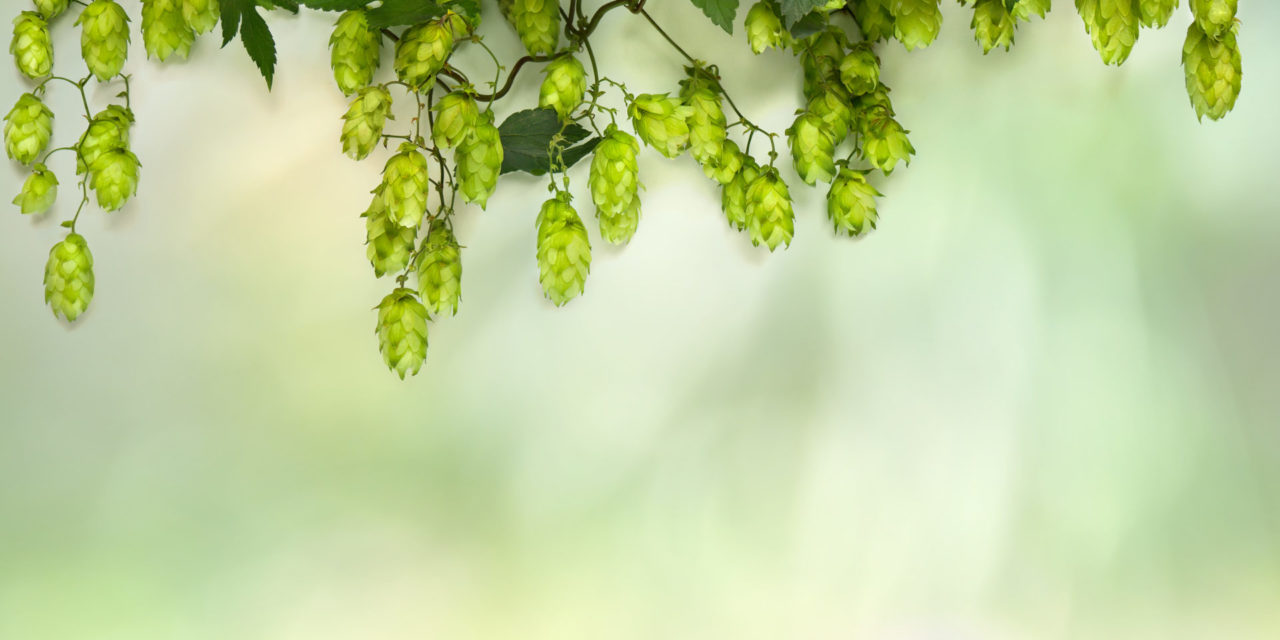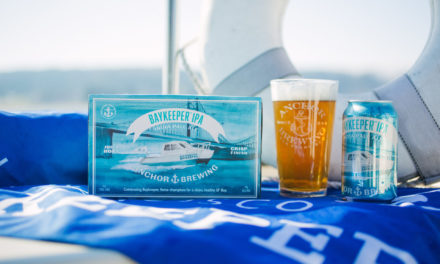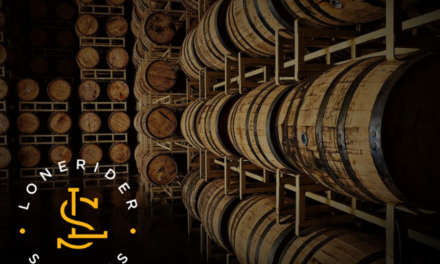Earlier this year, wildfires raged throughout the Pacific Northwest, a U.S. region that includes the states of Oregon and Washington as well as parts of Idaho, changing the region’s landscape and instigating myriad conversations about what effect lingering smoke and ash might have on the region’s winegrapes. Meanwhile, a second agricultural crop was also feeling the strain.
Months after the fires, chemical and sensory evaluations continue to try and determine what—if any—lasting damage was sustained by the hops crop during the fires. According to estimates by the Hop Growers of America, the area produces roughly 95 percent of the United States’ commercial hops.
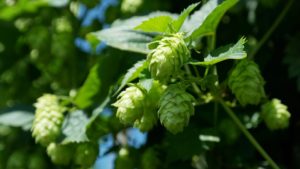 Oregon’s wildfires started roughly halfway to two-thirds through the 2020 hops harvest. Many of the blazes were in prime growing regions, such as the Mount Angel and Silverton areas of Oregon’s Willamette Valley, according to Michelle Palacios, administrator for the Oregon Hop Commission. The affected areas had “widespread smoke and ash falling.”
Oregon’s wildfires started roughly halfway to two-thirds through the 2020 hops harvest. Many of the blazes were in prime growing regions, such as the Mount Angel and Silverton areas of Oregon’s Willamette Valley, according to Michelle Palacios, administrator for the Oregon Hop Commission. The affected areas had “widespread smoke and ash falling.”
Concerns grew and the wildfires “really became an issue later in the season, when the varieties being harvested are more heavily extracted,” Palacios continues. At the time, primarily nhops were being gathered. This particular variety is commonly dried and pelletized for brewing use. Palacios says there were also some higher value aroma hops still being harvested.
Whether any hops harvested during the height of the wildfires are being used is subject to dealer and merchant evaluation on a case-by-case basis. “Those hops still of concern are having brewing trials to see if the [ashy or smoky] taste is carrying through to the beer,” says Palacios. These trials are being conducted in Yakima, where the nation’s hops are processed. “It’s fair to say the jury is still out.”
“I don’t think we know enough [about the effect of smoke and ash on hops],” adds Tom Shellhammer, brewing chemist at Oregon State University. “I think we can look to the wine industry and use that as a guidepost, but the grape analogy only goes so far.”
Effects Largely Unstudied
There are no systemic studies of fire-damaged hops—unlike the numerous examinations of smoke taint on grapes, so it remains to be seen how widespread or pervasive an effect the wildfires have had on this year’s crop. Shellhammer says it’s also unclear how (or whether) lupulin—the substance extracted from hops that’s most responsible for giving beer its characteristic aromas and flavors—may be changed by prolonged contact with smoke and/or ash.
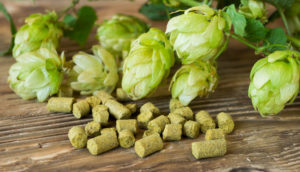 “The biggest concern is that the smoke influence will carry through, and the beer aroma or flavor will be off because of it,” Palacios says. “We don’t have enough experience with wildfire exposure on hops to know what to expect: Maybe we’ll find out it’s none.”
“The biggest concern is that the smoke influence will carry through, and the beer aroma or flavor will be off because of it,” Palacios says. “We don’t have enough experience with wildfire exposure on hops to know what to expect: Maybe we’ll find out it’s none.”
According to Palacios, some Oregon-grown hops have been rejected by hops merchants, who buy and resell to brewers. But those crops have been pulled back into the system, rather than relegated to compost, and are now in limbo waiting for new buyers. It’s too early to qualify the amount of smoke damage that’s been found, but Palacios assures it’s not on a par with crop failure, calling it more a footnote to the season. Plus, there have been “so many advances in the processing of hops,” that even imperfect hops still have brewing value, she says, and “extremely talented” brewers can use them.
Commonly, hops are dried and available in whole cones or pelletized, but lupulin can also be extracted via various methods.
Hops, Shellhammer adds, are different from grapes in that, if there are issues, “hop processors have the potential to use strategies to ameliorate [them].” This includes employing techniques such as supercritical CO2 extraction, which is a method for extracting lupulin from the cone using carbon dioxide. The phenolic material that might impart an off flavor is, he says, “more polar and not extracted.”
A lot also depends on how a brewer uses the hops. They could, for example, add extract to reduce the smoke or “dry hop with hops that are known to not be smoke affected,” he says. “[Brewers] have different cards to play.”
Dry-hopping involves adding hops at the end of the brewing process, after fermentation, to develop a more intense aroma. Pelletizing is a process by which the whole hops cone is milled into a powder and pressed into a pellet that brewers can use; the separation and sieving of green components from the cone and removing it at this step may help address smoke exposure. Roughly 80 percent of the hops crop is sent to brewers in this form. Less than 20 percent of hops are used as dried whole cones. Experts agree adding untainted hops is key, as brewers could dry hop with an untainted, highly aromatic variety or use an extract to mask the smoke or ash note.
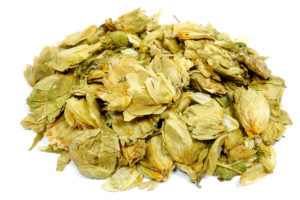
Production Continues
As investigations continue, brewers have been undeterred and progressed with the most evident seasonal celebration of this regional crop: brewing fresh hop beers.
Brewers experienced delays in receiving some of the fresh hops intended for limited-edition beer production. “There was a harvest delay of about seven to 10 days on one hop variety, when the farm lost power and the smoke was bad. But all of our fresh hop beers went forward as planned,” says Brad Blaser, part of Astoria, Ore.-based Fort George Brewery’s sales and marketing team. Palacios adds that a lot of fresh hop beers were made before the fires.
Meanwhile, Palacios says, some brewers trying to source hops during and after the fires, “were not as successful. It was a crazy time for everyone.” Some growers were forced to shorten or eliminate harvest shifts due to heavy smoke. Some brewers were reluctant to brew with those hop varieties that had ash on them, forcing some breweries to either forgo fresh hop brewing for the year or to find an alternative.
Fort George was able to make three different fresh hop beers in cans and one small batch of draft beer. The delays it experienced, says Blaser, were in hops intended for its pilsner. “The beer was brewed and lagered. We were just waiting to wet hop it with the fresh hops,” he says. The brewers didn’t notice any off-character notes with the hops they used. “The fresh hop beers turned out beautifully.”
Outside of the issues with fresh hops, Blaser says he’s not heard of any hop pellet shortages caused by the wildfires. And although there’s been no previous wildfire incident comparable to what the hop-growing regions of Oregon experienced this year, Palacios takes heart from conversations with older generations of growers who reminded her that hops used to be dried over wood fires.
There are, Shellhammer notes, some smoked styles of beer. Typically, these use smoked malts, but “smoke effected hops might work. Still, it’s a very narrow style set.”
Whether there are any investments into researching smoke effects on hops remains to be seen. But the issue is ripe for research which, Shellhammer says, could “put some of these questions to bed.”
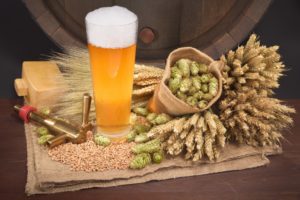 SIDEBAR
SIDEBAR
Five to Try: Fresh Hop IPAs
An ephemeral delight, fresh hop beers are a fall highlight in taprooms and package shops throughout the Pacific Northwest. A fizzy celebration of the hop harvest, lupulin-laden fresh hop beers tend to be available from August through November, if you’re lucky.
Fresh hop beer isn’t a style, but rather an ingredient for any type of beer. Most often, brewers seem to gravitate to using fresh hops in IPA, which are already a bit bitter. The hops add to that flavor profile. Pilsners and Imperial are also styles that you may see getting the fresh hop treatment.
Fresh hops are exceedingly perishable, as undried cones must be used within about 24 hours of harvest. Most of the harvest activity is centered in Oregon’s Willamette Valley and Washington’s Yakima Valley, which is why brewers in these areas take full advantage of the ingredient’s availability. It also explains why these beers are most frequently found on-tap rather than in cans.
As with many other things, 2020 proved an exception to this rule; however, some Portland area retailers said they saw less fresh hop beer come through their doors this year than in years past – both in the number of styles and cans available. And consumers bought as soon as these beer could be placed on shelves.
It’s a treasure hunt. You don’t have to catch them all, but you can enjoy trying.
Head Full of Fresh Hops
Fremont Brewing
Seattle, Wash.
Super skunky cannabis scent on first inhale of this fresh hop hazy IPA. Tastes exceedingly green with pineapple notes and a hint of banana. Lingers on the palate with distinct juicy taste. Features Yakima-grown hops, specifically mosaic and talus varieties. The sales force at the local package shop not only recommended this beer enthusiastically, but also expressed approval at checkout.
Farmers Annuary
Fort George Brewing
Astoria, Ore.
This seasonal IPA is brewed in collaboration with Crosby Hop Farms. Hops used in 2020 were centennial and amarillo. The nose is extremely green with citrus hints. Decidedly bitter aftertaste.
Hopicana
Old Town Brewing
Portland, Ore.
Lovely, creamy head and hazy golden liquid are the introduction to this English ale, enlivened with mosaic and citra fresh hops. The nose is agreeable, not aggressive. Mellow green notes with a bite of citrus on the lingering green finish.
From Harvests Past…
2019 Fresh Hop Double Crush IPA
Reuben’s Brews
Seattle, Wash.
This is the fresh hop iteration of the brewery’s imperial hazy IPA, which is brewed with citra hops. This particular iteration is light, smooth, and drinkable. Plenty of floral-herbal goodness to enjoy. Earned Gold at the 2019 Washington Beer Awards Fresh Hop Competition.
2018 Fields of Green Fresh Hazy IPA
Fort George Brewing
Astoria, Ore.
The 2018 edition of this limited and ever-changing beer featured a piney grapefruit scent with a super cloudy appearance. Taste is also abundantly grapefruit. A hint of mustiness on the nose. Just enough satisfying juicyness and very drinkable.

